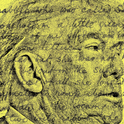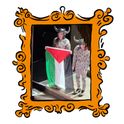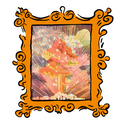Latin: Story of a World Language by Jürgen Leonhardt (Harvard, £22.95)
My father left school at 14, with a certificate: “DUX” it read. Just this month, age 91, he thought to ask me what it meant. “Leader!” I replied, “Ah” he said, “I’d always wondered...” It is the kind of trick Latin plays—insinuating itself into definitions of class and culture at a stroke—an aspiration and an obscurity; an imperial ghost, a demotic riddle. This book, which traces the vicissitudes of Latin over 26 centuries asks two central questions: When do languages die? And who owns them while they are alive? Leonhardt pursues the answers as if on the trail of time-travelling serial killers. Is a language dead when it is standardised? What if it is hijacked by one social group? Or written only rather than spoken? Leonhardt’s tip is that, to find robust answers, we need to look not just at the evidence but at the spaces in between. The showy spikes in Latin’s fame—during Rome’s peak; the Vulgate Bible’s creation; Justinian’s Byzantine reforms; European humanism and imperialism—overshadow wider, quieter usages. Latin was still the official language of Hungary until the mid-19th century. Of all extant Latin texts, only 0.01 per cent are “classics”—the literary works of Virgil, Cicero et alia. The vast majority, from the 3rd century BC until the 1800s, are political memoranda, medical archives, administrative chits and popular tales. Today we have Angelina Jolie’s tattooed belly and pidgin Latin in Harry Potter’s spells. Latin might be classified as a long-dead language—but this work reminds us that no one has informed Latin of that fact.
My father left school at 14, with a certificate: “DUX” it read. Just this month, age 91, he thought to ask me what it meant. “Leader!” I replied, “Ah” he said, “I’d always wondered...” It is the kind of trick Latin plays—insinuating itself into definitions of class and culture at a stroke—an aspiration and an obscurity; an imperial ghost, a demotic riddle. This book, which traces the vicissitudes of Latin over 26 centuries asks two central questions: When do languages die? And who owns them while they are alive? Leonhardt pursues the answers as if on the trail of time-travelling serial killers. Is a language dead when it is standardised? What if it is hijacked by one social group? Or written only rather than spoken? Leonhardt’s tip is that, to find robust answers, we need to look not just at the evidence but at the spaces in between. The showy spikes in Latin’s fame—during Rome’s peak; the Vulgate Bible’s creation; Justinian’s Byzantine reforms; European humanism and imperialism—overshadow wider, quieter usages. Latin was still the official language of Hungary until the mid-19th century. Of all extant Latin texts, only 0.01 per cent are “classics”—the literary works of Virgil, Cicero et alia. The vast majority, from the 3rd century BC until the 1800s, are political memoranda, medical archives, administrative chits and popular tales. Today we have Angelina Jolie’s tattooed belly and pidgin Latin in Harry Potter’s spells. Latin might be classified as a long-dead language—but this work reminds us that no one has informed Latin of that fact.












